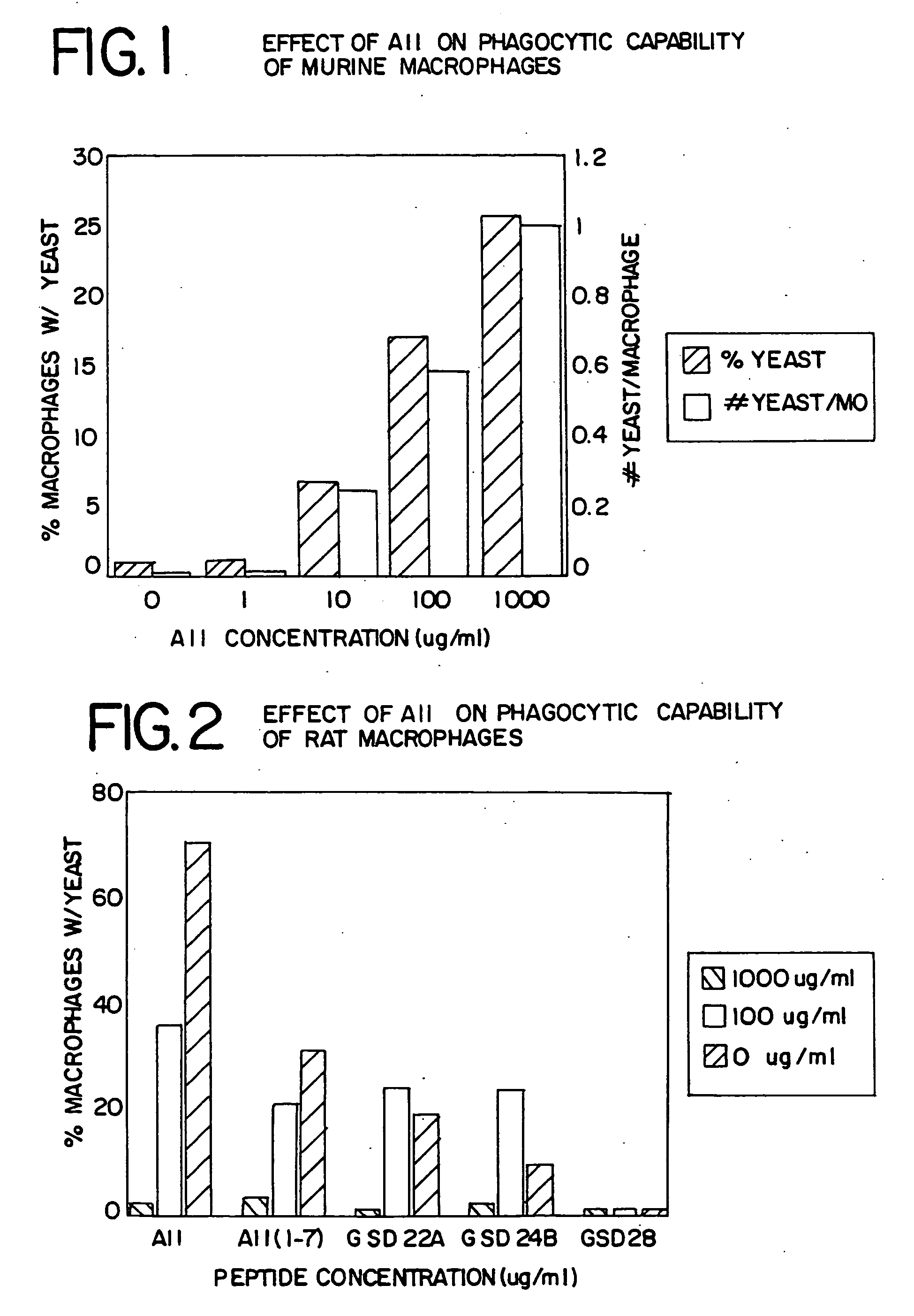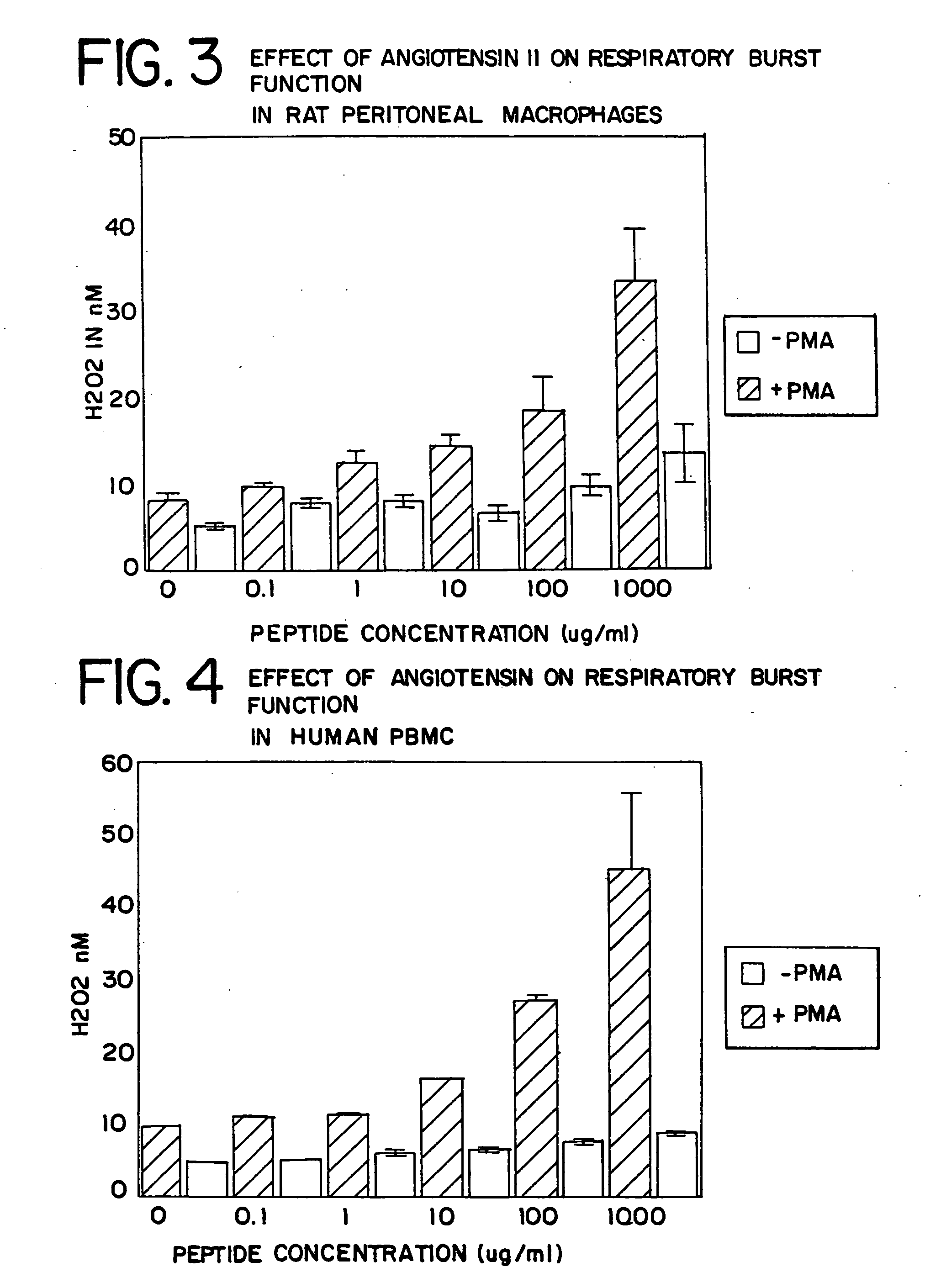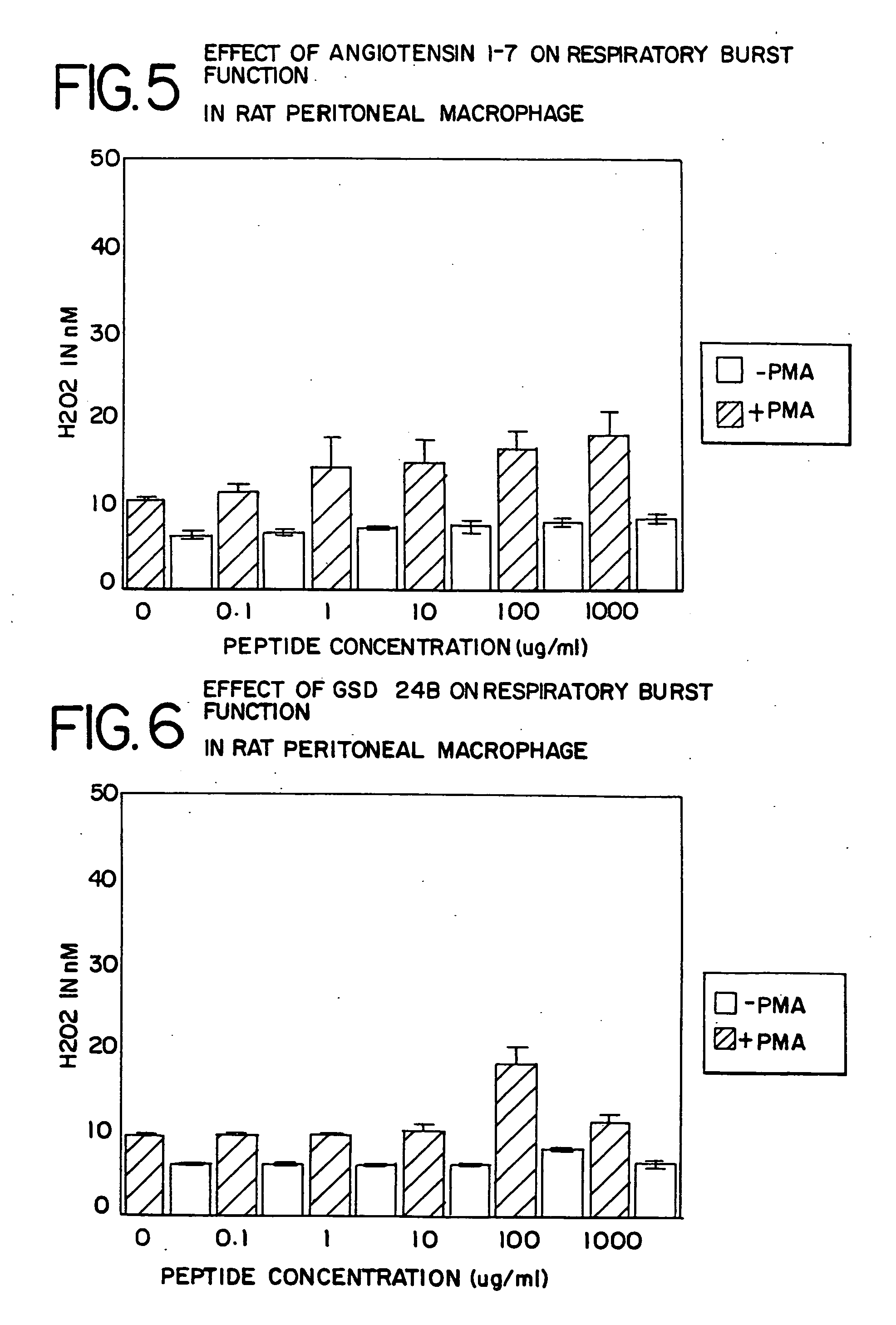Methods for promoting hematopoietic and mesenchymal cell proliferation and differentiation
a technology of mesenchymal cell and hematopoietic stem cells, applied in the direction of cell culture active agents, peptides, drug compositions, etc., can solve the problems of slow mature blood cell regeneration after transfusion, limited number of useful cells obtained, and limited number of stem cells transplanted
- Summary
- Abstract
- Description
- Claims
- Application Information
AI Technical Summary
Benefits of technology
Problems solved by technology
Method used
Image
Examples
example 1
Macrophage Differentiation: Phagocytosis
[0124]Resident peritoneal macrophages have very little phagocytic activity. Exposure of macrophages to inflammatory or activating agents will increase this macrophage function. Resident peritoneal macrophages were harvested from C57B1 / 6 mice or Sprague Dawley rats and resuspended at a concentration of 1×106 cells / ml in phosphate buffered saline (PBS). Five separate 0.5 ml cell aliquots were placed on a glass coverslip in a 35 mm petri dish. Prior to incubation, either 0.5 ml of PBS, AII, or AII analogues or fragments at between 1-1000 ug / ml final concentration was added to the individual cover slips. The dishes containing the cover slips were then incubated at 37° C. for 4 hours, after which the cover slips were washed 3 to 6 times with PBS. Opsonized yeast particles (Sigma Chemical Co.) (yeast opsonized with adult serum from the same species as that under study) were added to the cover slips and incubated for 2 hours, after which the cover sl...
example 2
Leukocyte Differentiation: Respiratory Burst
[0127]The respiratory burst of leukocytes (macrophages and polymorphonuclear neutrophils) is one component of the mediator system used to kill bacteria. As with phagocytosis, the level of this respiratory burst activity in resident macrophages is low. With differentiation, either to an elicited (inflammatory) or activated state, this functional activity is significantly elevated. Studies were conducted to assess the effect of in vitro exposure of murine or rat peritoneal macrophages and human peripheral blood mononuclear cells (PBMC) to various concentrations of AII on the capacity to generate hydrogen peroxide via the respiratory burst system. For the human studies, five different donors were examined.
[0128]The murine or rat peritoneal cells were harvested by lavage with 5-15 ml of cold PBS with 0.5% bovine serum albumin. The human PBMC were harvested by venipuncture from normal human volunteers and isolated from peripheral blood by Ficol...
example 3
Proliferative Response of Human Lymphocytes
[0130]Upon stimulation of lymphocytes with mitogen or antigen, these cells undergo blastogenesis and proliferation. In the absence of such stimuli, proliferation is seldom observed. One method to measure cellular proliferation in a short term assay is via measurement of the amount of the nucleotide thymidine that is incorporated into newly synthesized DNA. The effect of AII on the proliferation of human PBMC in the presence and absence of pokeweed mitogen (“PWM”) was assessed.
[0131]Human PBMC were collected from normal volunteers and isolated via Ficoll Hypaque (Sigma Chemical, St. Louis) density centrifugation. After isolation of the buffy coat, the cells were washed 3× to remove the Ficoll Hypaque, counted in trypan blue (0.01%) and resuspended at a concentration of 1×106 cells / ml in RPMI 1640 containing 10% fetal calf serum and antibiotics. A 100 μl aliquot of cells was added to each well. Thereafter, various concentrations (0.1 to 1000 ...
PUM
| Property | Measurement | Unit |
|---|---|---|
| concentration | aaaaa | aaaaa |
| concentration | aaaaa | aaaaa |
| body weight | aaaaa | aaaaa |
Abstract
Description
Claims
Application Information
 Login to View More
Login to View More - R&D
- Intellectual Property
- Life Sciences
- Materials
- Tech Scout
- Unparalleled Data Quality
- Higher Quality Content
- 60% Fewer Hallucinations
Browse by: Latest US Patents, China's latest patents, Technical Efficacy Thesaurus, Application Domain, Technology Topic, Popular Technical Reports.
© 2025 PatSnap. All rights reserved.Legal|Privacy policy|Modern Slavery Act Transparency Statement|Sitemap|About US| Contact US: help@patsnap.com



